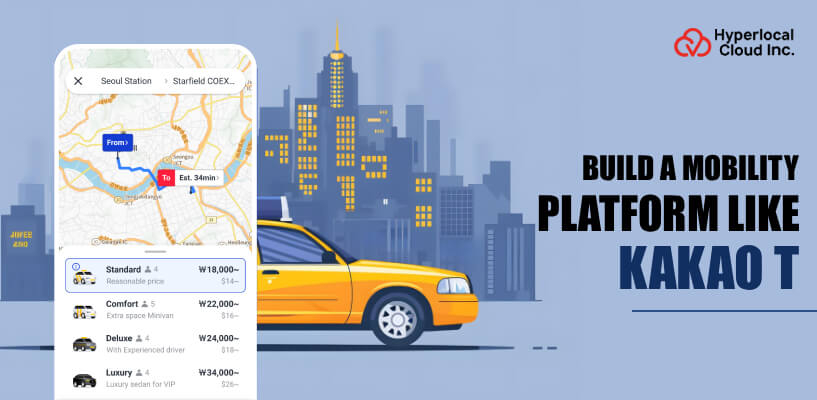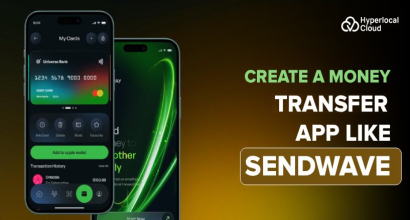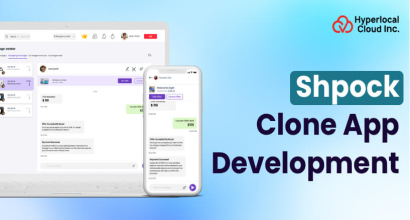Over the past years, the ride-hailing industry has experienced rapid growth, resulting in the excessive demand for ride-sharing app development in the market. One of the largest apps in the region is Kakao T, a transportation platform offering several services that originated in South Korea. It has gained popularity for providing effective, reliable, and diverse mobility solutions, including taxi, designated driver services, interconnection, and more.
As the demand for similar platforms increases worldwide, many companies are interested in creating a Kakao T clone. The purpose of this clone app is to bring comfortable transport services to new areas, supported by strong technology and user-friendly interfaces.
Market trends indicate that ride booking apps are no longer about booking trips. They develop to include stability initiatives such as multimodal transport, AI-operated customization, contactless payment, and electric vehicle integration. It not only makes a taxi app, but is a comprehensive transport solution that can suit modern urban needs.
What is the Kakao T App?
The Kakao T platform is a mobile application that facilitates transportation services digitally in South Korea. Kakao is the parent company of this application and also a well-known application like Kakao Talk and Kakao Pay. The primary motivation for developing a Kakao T application is to simplify the individual's journey. So that they can book a ride, a taxi, or select parking according to their convenience.
Here are the primary services provided by the app:
- Taxi-hailing
- Ride-hailing (Kakao T for Drivers)
- Car Rental (Kakao T Rental)
- Parking (Kakao T Parking)
- Public Transportation (Kakao T Transit)
- Navigation and Route Optimization
- Kakao T Pass
Ready to launch your mobility platform?
How Does a Kakao T Clone Work?
A working model of a ride-hailing app like Kakao T is filled with numerous features that are quite similar to those of a Lyft clone or Uber clone. Here you will get a brief breakdown of the same. Let's begin.
1. User Registration and Login
This is the first step, where users are required to log in to the Kakao T app by using their contact details, email address, or social media handles.
2. Ride Booking
Passengers enter the dashboard where they can search for the ride. The app then finds the nearest available driver based on your location, time, and price.
3. Driver Acceptance
Drivers receive riding requests and can accept or reject them. When the passenger is accepted, the passenger is informed, and both can track each other's location in real time.
4. Ride Execution
Once a driver reaches the user location, they can start the journey, and when they drop passengers at the selected route, they complete the journey accordingly.
5. Payment Processing
Payments can be made through various options, including credit/debit cards, digital wallets, and cash. The app processes safe payments.
6. Ratings and Reviews
Both drivers and passengers get the opportunity to share their experience by exchanging ratings. This reaction helps maintain quality service.
7. Admin Panel Management
The administrator oversees the entire platform, manages drivers, users, transactions, disputes, and reports to ensure even operations.
The Business Benefits of Investing in Kakao T Clone App
Businesses or startups that are looking to kickstart their business journey by entering the ride-booking market with an app like Kakao T will get a wide range of proficient benefits. Some of them are discussed below; please take a look.
1. Cost Efficiency
Typically, a Kakao T app requires substantial financial investments to develop, including costs for design, development, testing, and distribution. However, a clone app is a cost-effective option. This cost reduction allows startups with a limited budget to enter the riding hall market.
2. Scalability
As the user base expands, the app automatically receives more traffic and can be updated with new features. This scalability enables your business to expand into new cities or countries.
3. Multiple Revenue Streams
Investment in this mobile application opens different ways of generating revenue, right outside the riding commissions. Companies can use high-time pricing to maximize revenues, offer premium services such as luxury cars on rent or membership plans, and include targeted ads in the app.
4. Valuable Data Insights
Data is an important feature of today's digital economy. With a Kakao T clone, companies have access to a tax of data, including user behavior, top riding, popular passages, and payment settings. This data can be analyzed to improve operating efficiency and limit marketing strategies, eventually to promote profitability.
5. Reduced Risk
Developing a full-fledged app always comes with a lot of risks and technical challenges. However, creating an app like Kakao T reduces many of these risks, as it is already developed and based on a successful app clone script.
The Impactful Features of Kakao T Clone
There are so many features that the Kakao T clone app offers to businesses. The features are typically beneficial for the passenger panel, driver panel, and admin panel. Just review the information below:
Passenger Panel
1. User Registration and Profile Management
Users can easily register for the app by adding the required credentials. Users can manage and update their profiles based on their requirements.
2. Easy Ride Booking
Users are allowed to choose between different riding types based on budget and comfort, including standard taxis, premium rides, or interconnection options.
3. Real-time Tracking
When a trip is booked, passengers can track the driver's location in real time and reduce anxiety and uncertainty. They receive information about the driver's arrival and travel progress, and improve general security and openness.
4. Multiple Payment Options
The app supports different types of payment methods, in which payment via credit/debit cards, digital wallets, and cash payments are the main options. This flexibility completes extensive target groups with different payment preferences.
5. Ride History and Receipts
Users can access the previous rides and download the invoice for expenditure tracking or reimbursement purposes. This feature is beneficial for corporate customers.
6. In-App Communication
To resolve any type of query, users can directly connect with the driver and the admin. This will enhance the overall user experience.
7. Promotions and Discounts
Users can get extra discounts on their rides in the form of coupon codes or referral codes. This approach will attract a large number of users.
Driver Panel
1. Driver Registration and Verification
Drivers upload and register their documents for background check and verification purposes. This will ensure safety and compliance with local rules.
2. Ride Request Management
This feature enables the drivers to receive incoming riding requests that they can accept or reject based on their availability and preferences.
3. GPS Navigation and Route Optimization
GPS navigation provides drivers with accurate routes, which, however, reduces fuel costs and increases customer satisfaction.
4. Earnings Dashboard
This feature allows the drivers to track their daily, weekly, and monthly income within the app. This will give the drivers openness and inspiration.
5. Ride History
Drivers have access to previous trips and rental details, which can help with tax submission and revenue management.
6. In-App Communication
Direct chat or ring options with passengers and support teams help drivers solve questions quickly.
7. Driver Ratings
Getting passengers' feedback helps drivers improve the quality of service and maintain a good position in the app.
Admin Panel
1. User and Driver Management
The administrator enables dashboard leaders to approve new users and drivers, set guidelines, and monitor the general platform activity.
2. Ride and Booking Management
This feature enables admins to monitor and analyze all rides in real-time, addressing problems and resolving disputes between passengers and drivers.
3. Payment and Commission Management
The system manages the ticket collection and the driver's payment, and automatically calculates the Commission and reduces manual errors.
4. Analytics and Reporting
The administrator has access to a detailed report on tour, income, active users, and market trends. This insight helps to make data-driven decisions.
5. Promotions and Offers Management
With the help of this feature, admins can easily create discounts, referral programs, and loyalty plans to attract a wide range of users.
6. Multi-city and Multi-language Support
If the app spreads to different areas, administrators can manage settings for different cities and support different languages, and secure localized experiences.
7. Customer Support Management
A helpdesk module allows administrators to handle complaints, answer questions, and provide timely help to users and drivers.
Create a scalable and secure Kakao T clone today
What are the Steps Involved to Build a Kakao T Clone App?
Several steps are involved in building a mobility platform like Kakao T. Some of the most relevant ones are discussed below that businesses can consider.
1. Market Research and Requirement Analysis
Before diving into development, you do full market research to ensure a solid foundation. Understand your target groups, regional transport needs, and competing landscapes of other apps. Identify the characteristics that users want and the legal rules you should comply with in the operating sector.
2. Define Features and Workflow
Based on the research, the most important features will be designed in your app. It will cover passengers, drivers, and functionality for gratitude. Make wide user trips and workflows to ensure smooth interaction and easy navigation. Decide whether you want to integrate AI features, multilingual support, or a payment port at this level.
3. Design UI/UX
Make a wireframe (original blueprint) and then wide mockups that focus on user experience. The interface should be simple enough for users of all ages, so that they can order, pay, and support. Design separate interfaces for passengers, drivers, and praise to meet your specific needs.
4. Development Phase
Businesses that are looking to create a bike rental app like Kakao T can either go with the custom mobile app development solutions that are slightly costly or simply utilize white label solutions for development purposes. However, based on this selection, the final cost will be decided. Other than that, the cost to create a car parking app like Kakao T starts at $6,000.
5. Testing
Test in all modules, including functional testing, targeted tests, performance tests, safety testing, and compatibility tests. Identify and resolve the error to ensure it functions properly on various devices.
6. Deployment
Start launching the Kakao T clone app on the different operating systems, by targeting both Android and iOS users. Configure monitoring tools to track the app performance and identify errors.
7. Maintain the App
Post launch, monitor the app for frequent problems and collect users. To improve performance and keep you competitive, update the app with regular new features, bug fixes, and security updates.
The Tech Stack Required to Build a Kakao T Clone
Numerous technological stacks are responsible for building a robust Kakao clone app. The table mentioned below has all the details for the same.
| Category | Tech Stack |
| Frontend | Android: Java, Kotlin | iOS: Swift, Objective-C | Cross-platform: React Native, Flutter |
| Backend | Node.js, Python (Django/Flask), Ruby on Rails, Java (Spring Boot) |
| Database | MongoDB, PostgreSQL, MySQL |
| Real-time Features | WebSocket, Firebase |
| Maps and Navigation | Google Maps API, Mapbox |
| Payment Gateways | Stripe, PayPal, Braintree |
| Cloud Services | AWS, Google Cloud, Microsoft Azure |
| AI & Machine Learning | TensorFlow, PyTorch, IBM Watson |
The Key Considerations for the Development of a Kakao T Clone
There are several important aspects that need to be considered before developing a ride-hailing app like Kakao T. Go through the information below to understand this more clearly.
1. Understanding the Target Market
It is crucial to understand the requirements of the target audience, as the transportation market is vast. Once you get the valuable insights, start implementing them in order to grow your business.
2. Compliance and Regulations
Ensure that the Kakao T clone app complies with local taxi and ride-hailing laws, license rules, and safety standards. This includes driver background checks, vehicles, and insurance inspections. Failure to solve this can lead to legal problems, and your business may be disrupted.
3. User Privacy and Data Security
Use strong encryption, a secure payment portal, and privacy restrictions that stick with global standards such as GDPR or CCPA. It creates self-belief with users and protects your platform from cyber threats.
4. Scalability and Performance
Your app should be able to handle the growing number of users and rides without crashing or breaking. Scalability involves designing appliances and backend servers, which allow spontaneous development because your business is spreading into new cities or lands.
Start building your own Kakao T clone today!
How to Make Money from the Kakao T Clone?
Below are several monetization models mentioned, from which businesses or startups can implement the one that matches their business needs. Have a look:
1. Commission from Each Ride
The primary source of income is the commission imposed on each complete trip. This model ensures that you earn continuously because the number of rides increases.
2. Surge Pricing
At the time of high demand, such as peak hours, unfavorable weather conditions, or special programs, you can use surge prices to handle demand. This means that the price of balancing supply and demand is increasing.
3. Subscription Plans and Memberships
You can introduce membership models where users pay monthly or annual fees to receive benefits such as discounted rides, priority order, or cancellation fees. This provides an estimated, recurrent income and encourages customer loyalty.
4. In-App Advertising
Show ads in the app for local businesses or brands. For example, restaurants, cafes, or shops can pay for targeted banner ads or promotional proposals for passengers. It is a passive revenue flow that can grow with a user base.
5. Partnering with Local Businesses
Collaborate with restaurants, hotels, or organizers to offer package offers or referral bonuses. For example, a hotel can pay to integrate tax booking for guests through your app, share commission, or an advertising fee.
6. Data Monetization (With Caution)
Travel patterns, top times, and popular routes can be collected, and anonymous data can be valuable for urban planners and transportation officials. This should be done with strict privacy safety measures, but it can generate extra revenues.
Bottom Line!
A ride-sharing app like Kakao T provided a great opportunity for businesses to enter the rapidly growing ride-sharing market. With the advanced and feature-enriched app with AI integration, it enables start-ups and established businesses to build a successful mobile application that meets users' needs. This could be possible if businesses connect with an experienced ride-sharing app development company.
If you are considering entering the transport app industry, it is definitely worth seeking to invest in a Kakao T clone. It combines speed for the market, strength and scalability, and the materials required to thrive in today's digital economy. So without a second thought, reach out to the experts of Hyperlocal Cloud and start your business journey.



